The bluest place to enjoy Haeundae
HAEUNDAE BLUELINE Park is where one can witness the crystal blue waters and skies of Busan in all its glory. It has been selected as one of the winners of the 2022 Korea Tourism Awards—recognized as an eco-friendly tourist attraction[1]. Taking a short journey of 4.8 km from Mipo Station to Song-jeong Station, Haeundae Beach Train and its Sky Capsule offers visitors splendid scenery all along the Haeundae Beach shoreline.
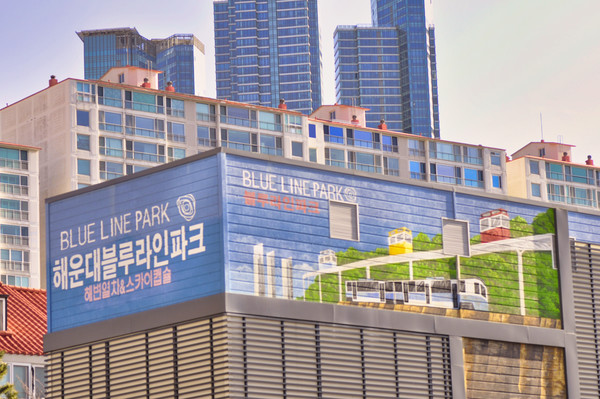
Haeundae Blueline Park
Haeundae Blueline Park is a renovation of the old Donghae Nambu line, to a green, eco-friendly tourist spot, covering the eastern end of Haeundae[2]. It has a wooden walking-trail for those willing to walk along the shoreline of the East Sea. The Green Railway leads to all the stations that the Beach Train stops by, with friendly signs showing the distance to the next station. The wooden stairs connect the railway to the coastal cliffs and rocks. Dal-ma-ji Observation Desk, reed fields in Gu-deok-po, and Song-jeong Beach are some spots that the Green Railway stops by along the railroad. Enabling close encounters with surrounding nature, one could touch the water or meet animals that are hard to spot in cities along their walk to the last station. Wooden benches and outdoor exercising equipment are also available—allowing a short break during the long walk.
The various stops of Haeundae Beach Train & Sky Capsule
The Haeundae Beach Train and Sky Capsule offer a distinct view from the wooden deck walking-trails. The vivid-colored, retro-style Haeundae Beach Train stops at Dal-ma-ji Tunnel, Cheong-sa-po, Da-rit-dol Skywalk, and Gu-deok-po on its way to its last stop, Song-jeong Station. The seats are all facing the sea so that all passengers can appreciate the crystal waters and verdant vegetation along their journey. During the summer peak season, it operates until 10 p.m. for tourists to enjoy the night scenes of Haeundae—embellished with dazzling city lights and fishing boats. At each stop, passengers can choose either to walk or take the train to the next station. Above the Haeundae Beach Train, the Haeundae Sky Capsule passes by, offering an even more expansive view of the city and nature on its aerial trail. The Sky Capsules are smaller in size, with only four seats available per capsule. The low speed of the Sky Capsules allows one to fully enjoy the vast ocean and the eastern horizon, with the towering skyscrapers of Haeundae Marine City.
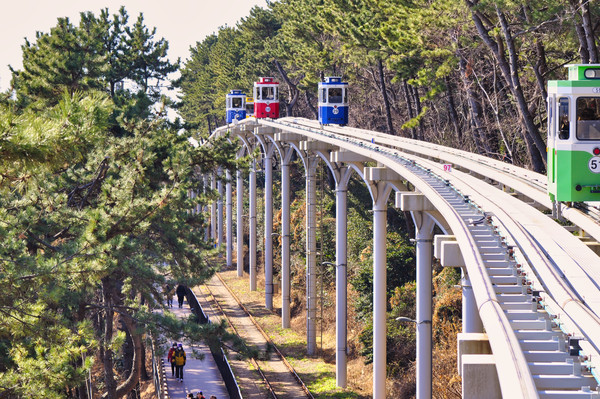
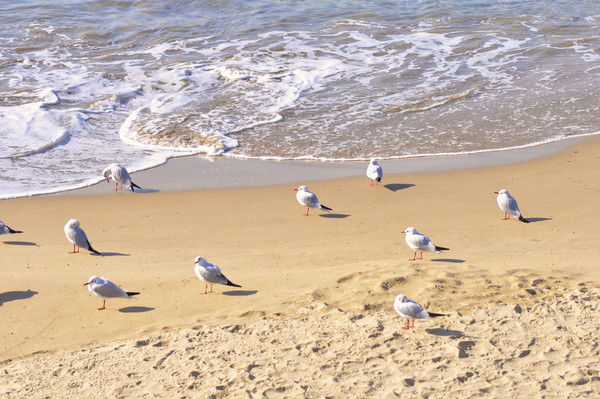

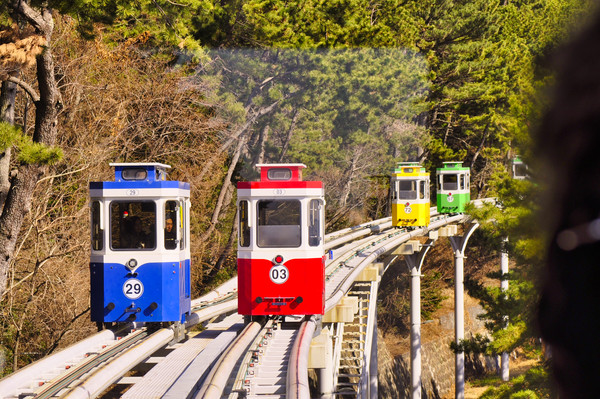
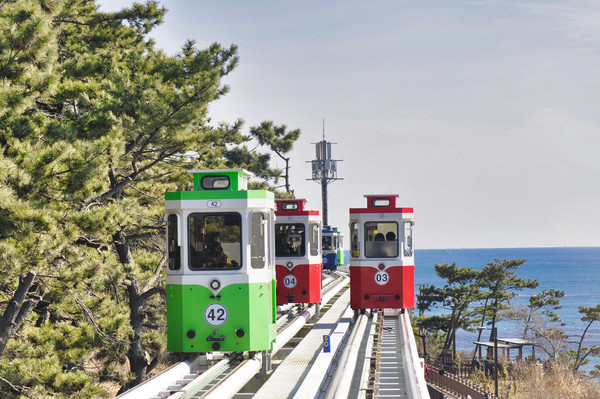
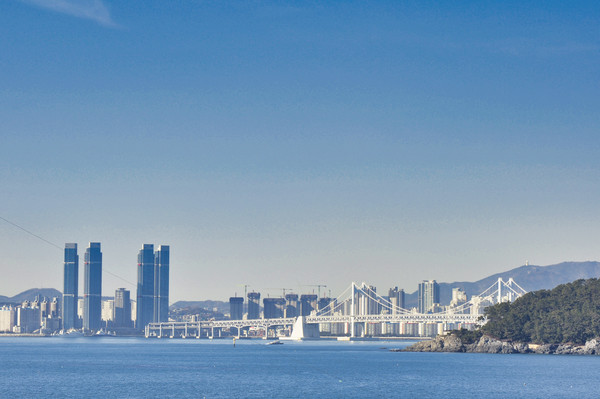
Mipo, well-known for its port, is where the Haeundae Beach Train and Sky Capsule start their journey to Song-jeong and Cheong-sa-po Station. Before it was recognized as an essential tourist attraction, it was a small town comprised of fishermen. Along the Mipo seawalls, groups of fishermen go fishing though windy weathers and high waves towards the coast. As the surface temperature remains stable ranging from 11 °C to 21 °C all year round, it is a suitable environment for fishing, as diverse aquatic species are spotted with seasonal changes, including greenlings, gray mullets, and gizzard shads[3].

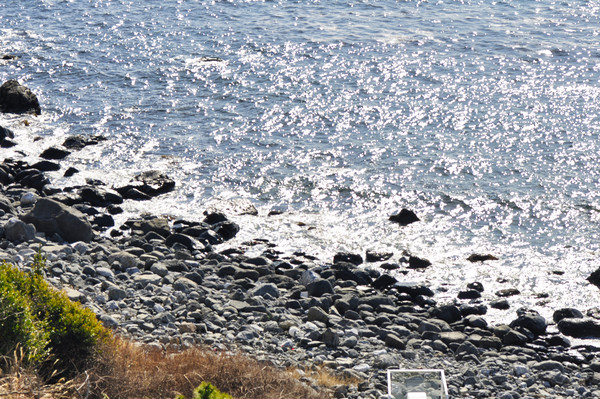

The Beach Train also stops at Da-rit-dol Skywalk, passing along Dal-ma-ji Tunnel. The area around Dal-ma-ji Tunnel was once fortresses during wartime, but it is now open to civilians and tourists. The tunnel leads the way to Da-rit-dol Observatory, a skywalk modeling a dragon stretching all the way to Japan's Tsushima Island[4]. The transparent glass floor of the skywalk is surely a thrilling opportunity, letting tourists be overwhelmed by big waves hitting the rocks.
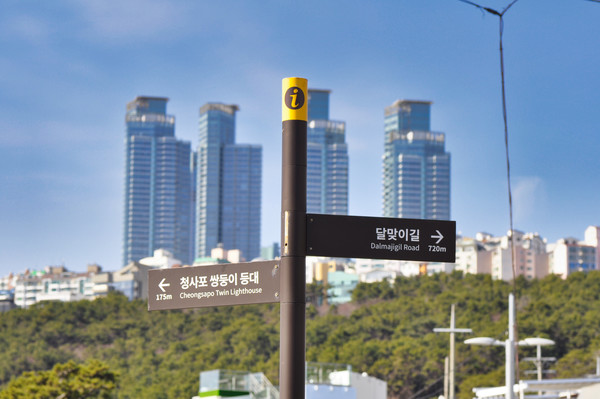
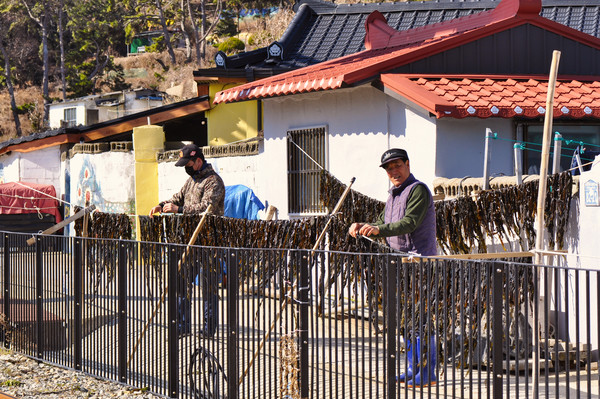
Cheong-sa meaning “blue sand,” Cheong-sa-po is the perfect location to relish the freshness of the waves along with the softness of the silky sand[2]. The small fishing village of Cheong-sa-po is known for its twin lighthouses and small fishing boats aligned beside the seawalls. The twin lighthouses prove their true qualities in dark, cloudy night times where the lights are scattered through the mist and fog above the sea. Taking a short walk along the little town, some fishermen can be spotted drying seaweeds under the glaring sunlight. The outskirts of the village are full of tourist attractions including seafood restaurants and cafés—creating a foreign, yet peaceful and idyllic rural atmosphere.
A short walk after getting off the Beach Train at Song-jeong Station takes you to Song-jeong Beach. It is where surfing was first introduced in Korea in 1995[5]. The shallow water and continual set of waves coming at regular intervals make it ideal for surfing. Surfing lessons and surfing clubs are often held on Song-jeong Beach as it provides one of the best surfing spots.

* * *
The trails of the Haeundae Blueline Park present a scenic route reflecting varied images of Haeundae. One can walk along the trailway, or take trains or capsules exclusive to Haeundae Blueline Park to fully appreciate the panoramic sceneries of the east coastline.
[1] Haps Magazine Korea
[2] Haeundae Blueline Park
[3] Bada Time
[4] Dynamic Busan
[5] Visit Busan

